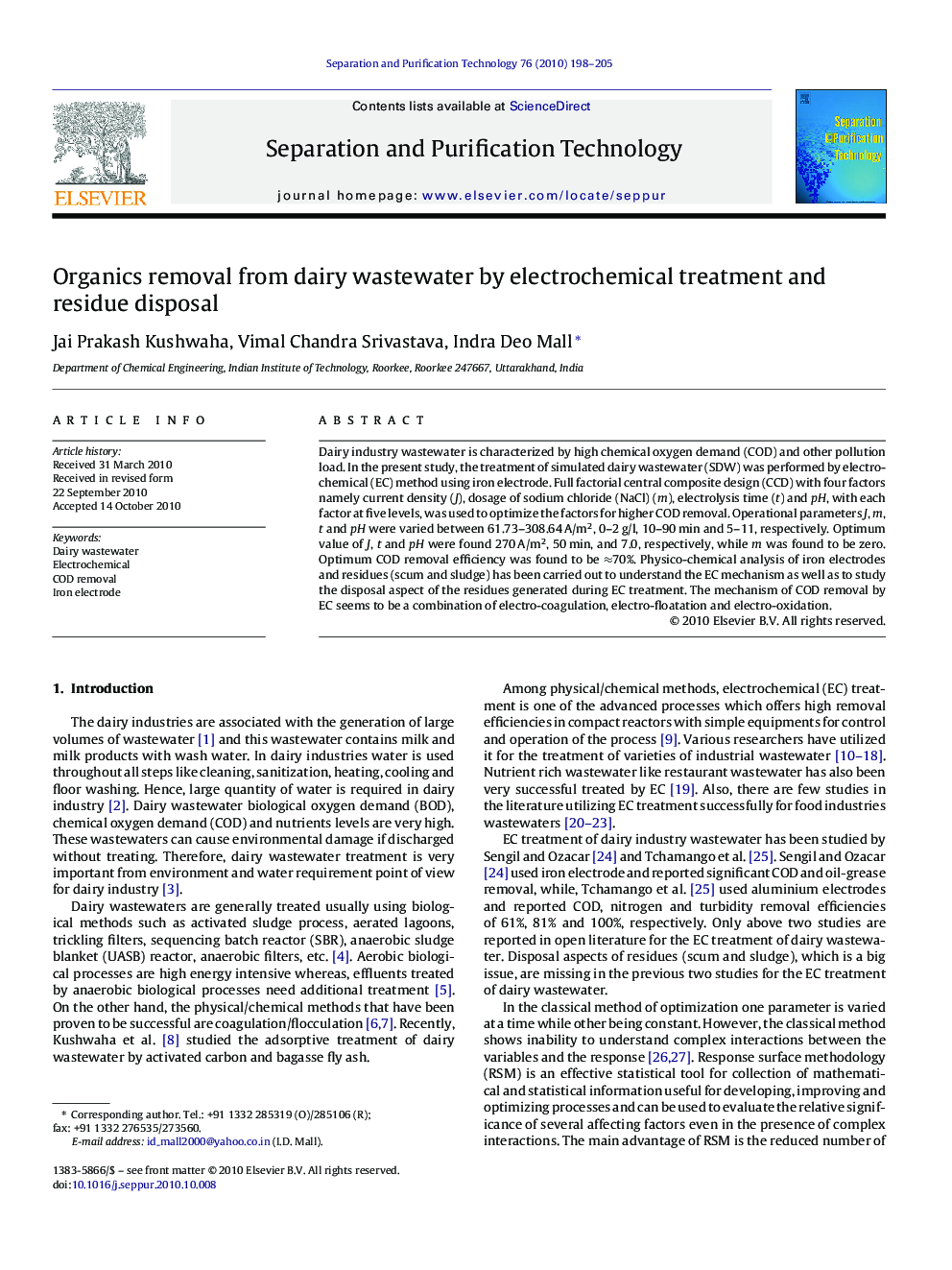| کد مقاله | کد نشریه | سال انتشار | مقاله انگلیسی | نسخه تمام متن |
|---|---|---|---|---|
| 642919 | 884346 | 2010 | 8 صفحه PDF | دانلود رایگان |

Dairy industry wastewater is characterized by high chemical oxygen demand (COD) and other pollution load. In the present study, the treatment of simulated dairy wastewater (SDW) was performed by electrochemical (EC) method using iron electrode. Full factorial central composite design (CCD) with four factors namely current density (J), dosage of sodium chloride (NaCl) (m), electrolysis time (t) and pH, with each factor at five levels, was used to optimize the factors for higher COD removal. Operational parameters J, m, t and pH were varied between 61.73–308.64 A/m2, 0–2 g/l, 10–90 min and 5–11, respectively. Optimum value of J, t and pH were found 270 A/m2, 50 min, and 7.0, respectively, while m was found to be zero. Optimum COD removal efficiency was found to be ≈70%. Physico-chemical analysis of iron electrodes and residues (scum and sludge) has been carried out to understand the EC mechanism as well as to study the disposal aspect of the residues generated during EC treatment. The mechanism of COD removal by EC seems to be a combination of electro-coagulation, electro-floatation and electro-oxidation.
. In this study, electrochemical (EC) treatment was applied to treat simulated dairy wastewater (SDW). Full factorial central composite design (CCD) with four factors namely current density (J), dosage of sodium chloride (NaCl) (m), electrolysis time (t) and pH, with each factor at five levels, was used to optimize the EC treatment process for higher COD removal from SDW.Figure optionsDownload as PowerPoint slideResearch highlights▶ Response surface methodology (RSM) has been successfully employed for electro-chemical (EC) treatment of simulated dairy wastewater (SDW) using iron electrode. ▶ The mechanism of COD removal by EC was found to be a combination of electro-coagulation, electro-floatation and electro-oxidation. ▶ COD, TS, TN and turbidity removal efficiencies at optimum condition were found to be 70%, 48.2%, 92.75% and 99.8%, respectively. ▶ The cost of both electricity and the electrode consumption required to run the system at optimum conditions to reduce COD of 1 m3 of dairy wastewater from 0.43–15.2 kg/m3 to 0.129–4.6 kg/m3, is in the range of 0.072–2.55 $.
Journal: Separation and Purification Technology - Volume 76, Issue 2, 13 December 2010, Pages 198–205